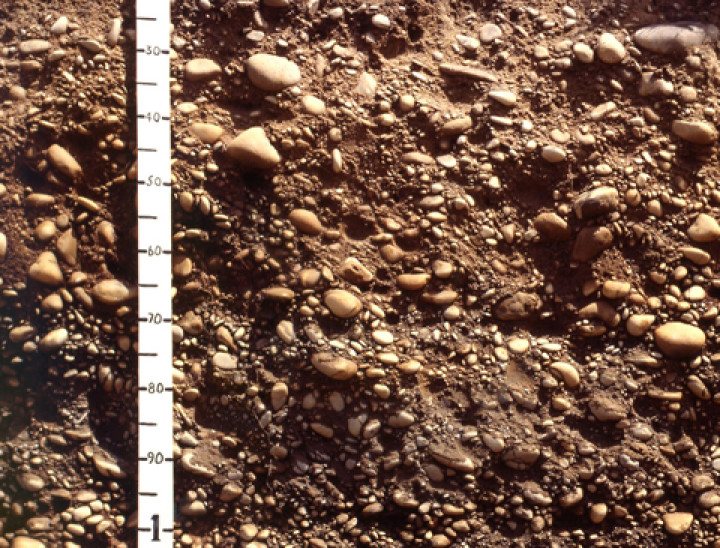Brown Soils [B]
- Home
- » Topics
- » Soil classification
- » NZSC
- » Soil orders
- » Brown Soils [B]
Our most extensive soils, covering 43% of New Zealand
Brown Soils have a brown or yellow-brown subsoil below a dark grey-brown topsoil. The brown colour is caused by thin coatings of iron oxides weathered from the parent material.
Occurrence
Brown Soils occur in places where summer drought is uncommon and that are not waterlogged in winter. They are the most extensive soils, covering 43% of New Zealand.
Physical properties
They have relatively stable topsoils with well-developed polyhedral or spheroidal structure.
Chemical properties
Soils have low to moderate base saturation. Clay minerals are dominantly mica/illite and vermiculite, with allophane in Allophanic Brown Soils.
Biological properties
Soils contain large, active populations of soil organisms, particularly earthworms.
Soil groups
Soil orders are divided into soil groups based on variation in factors such as drainage status, parent material, chemical and physical properties:
- [BL] Allophanic Brown Soils — have an horizon with soil properties dominated by allophanic material
- [BS] Sandy Brown Soils — dominated by sand or loamy sand to depth
- [BX] Oxidic Brown Soil — similar to Oxidic Soils but with significant weatherable minerals
- [BM] Mafic Brown Soils — in materials from dark igneous rocks or sediments
- [BA] Acid Brown Soils — strongly or extremely acid
- [BF] Firm Brown Soils — strong, apedal subsurface horizon
- [BO] Orthic Brown Soils — other Brown Soils

